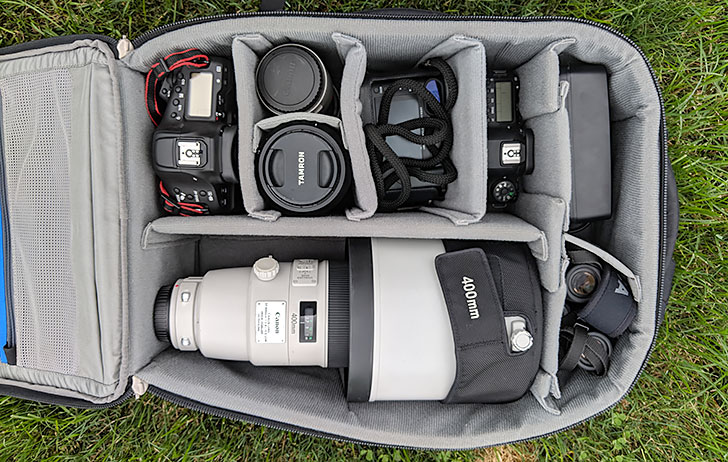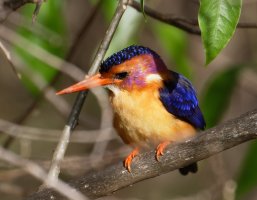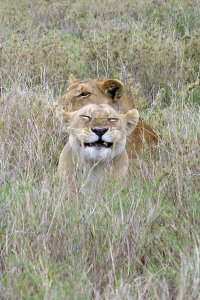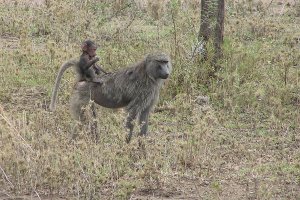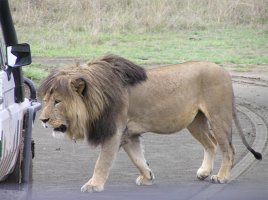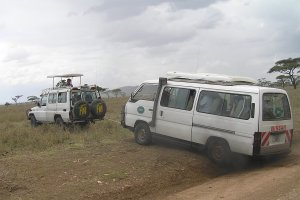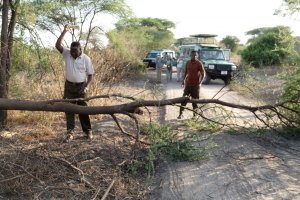Hi Dholai
I read the posts above with lots of good suggestions in them, specially AlanF with lenses. When you say Tanzania and Kenya, I am assuming that a good proportion of your days will be in protected areas like the Masai Mara GR, Amboseli NP and Serengeti NP. If this is the case then I can share some thoughts as those are places that I do frequent. At the same time, I don't know what you normally shoot with on other wildlife trips. So I don't know which lenses you are comfortable with managing and handling? I will write first about lenses as I think they are the more important part of the gear bag for such a trip. When it comes to focal lengths, there are many variables. A long trip through the protected areas i listed above might provide you with subject matter as big as an elephant, and in the same environment, something as tiny as a pygmy kingfisher! Many of the animals you encounter will not be very afraid of the jeep and you might get very close. Some others might not let you get so close. In some reserves, you may be able to go off the road and choose your distance. Other times you may be restricted to the road and then longer focal lengths will allow more options.
I would try to take three lenses with. Also, as Mikehit mentioned, your vehicle configuration will be a factor in how easy and effectively you can set up for your shooting. There are very many different game drive vehicle configurations. If you are using one that will take you between those countries on the public roads then it is most likely to have hard windows which will hopefully be able to open as wide as possible? If we spend more days within a single game reserve we also sometimes remove those windows entirely for our game drives, if it is permitted?
An EF 24-105 f4 L IS, for scenery, elephants, landscapes and skies, and casual people photos.
An EF 100-400 f5.6L IS ii for your 'fast-reaction' rig. This one you keep by your side or on your lap whilst on game drive, and it is generally light and compact enough that you can rapidly deploy it, when needed. Some subjects might only be available for a very short time and being able to get off a few quick shots can be helpful. The 100-400mm of focal length is usually enough for most but definitely not all of the scenes you might find yourself in. The maximum aperture of f5.6 is not really ideal for taking pictures before sunrise, nor for the short period after sunset. At the same time you can offset that somewhat with the good high iso image quality of any of the 5D Mk4, 1DX2, 1DX3 or R5 that you mentioned above. On many of the trips I go on, at least a few of the very best images come from the 100-400 or an equivalent, just because the user was able to get it out and take the picture handheld and quickly. An RF 100-500 would do the same job.
An EF 600 f4 IS or EF 500 L F4 IS or EF 400L f2.8 (with 1.4x extender) - taking along any one of these three super telephoto lenses will allow you to work in lower light, pre-sunrise and post-sunset, than the zoom. They will also enable you to capture strong portraits, control the background more, and photograph animals for longer, by staying a further distance away whilst photographing without disturbing their behaviour. You will also likely get stronger shots of small animals like mongooses, lizards, and perhaps better shots of baby predators like lion, cheetah, hyaena and leopard cubs. Bird pictures become better options. However, these lenses are all bulky, and they can take a little dexterity and practice to get them set up easily in a safari jeep. It is possible to use a tripod with a gimbal of course, but many folk do well with these lenses supporting them on a bean bag. If you already have experience of using any or all of those three I listed, you may already have some idea of how easy or difficult one is for you to manage in a vehicle. The latest version III of those super telephotos, in EF 400 f2.8 III and EF 600 f4 IS iii weigh about the same as the EF 500l F4 IS ii but they are both bulkier than the 500. Using one of these long lenses in a shared safari vehicle also works best if your fellow occupants don't shift around too much in the vehicle when you are focusing, shooting etc. Images taken over long distances with such lenses are also most affected by heat haze, and the only way i know to avoid that is to get closer or find the subject at a cooler time of day.
If you cannot take one of these three super teles, 600 f4, 500 f4 or 400 f2.8, then the EF 400 f4 IS ii is an alternative that is quite compact, and very light and can be combined with a 1.4x extender. Alan F mentioned it above and its a good option if you decide that a lighter rig is preferable. Then you combine a 24-105, a 100-400 f5.6, and a 560 f5.6 (in the form of an EF 400 DO f4 IS ii with Extender). For the lenses that i discussed above, one can obviously replace EF with RF where applicable.
For camera bodies, I find that the 1DX Mk3, 1DX Mk 2, 1DX, 5D Mk 4 and the R5, R6 can all get me good results. I am happy to process RAW images from all of those cameras for print at iso settings from ISO 3200 to ISO 6400. For web use, I am happy to go up to iso 10 000 on all these bodies. If your lens choice includes the use of a 1.4x extender on a super telephoto a lot of the time, then generally the 1DX bodies seem to handle AF a little better the 5D bodies. The R5 and R6 also seem to be a little better with 1.4x converters and AF accuracy than the 5D bodies. With bodies, if you choose to use the higher resolution models like the 5DSR and R5 then you might find that you have to make extra effort to steady yourself when shooting, specially with the longer focal length lenses. Some people experience this more than others and it will also depend upon how you evaluate your images afterwards. With the 5DSR, my only concern would be with its reduced continuous shooting capacity, compared to the other cameras in the list. But, so long as you are aware of that limitation, then it is also a solid safari camera. If you are trying to save weight for your travel, then taking similar Canon bodies that share battery types can save you weight. If you take a mix of 1DX and 5D/R5 bodies then it is two battery sizes as well as two different chargers. Usually, most people don't run their 1DX or 5D bodies out of battery during a single day or at most, might use a single battery. With the R5 you may use more batteries than that. It will depend upon subjects as well as how much time you spend looking at the pictures on the camera.
Also important is what Private By Design said regarding familiarity with camera bodies. Some sightings the animals will be around for long periods and you can take your time with settings and setup, other times you may only get a moment to shoot.
For myself, I typically take 3 lenses with when i travel to Tanzania and Kenya, most often being the 16-35/100-400/500f4 trio. I try take 3 bodies. Most often it is a single 1DX iii, a 5D4 and an R6 nowadays. Before, I traveled with the same lenses but a single 1DXii, and a 5D4 and a 90D. I do make use of the added versatility that the swivel-tilt screen allows with the R6 and 90D so i always want one swivel-tilt camera in my bag.
Sorry for this long post but if it is a trip of a lifetime, you do want to make good choices and have a great time and there some variables.
Cheers
Grant

